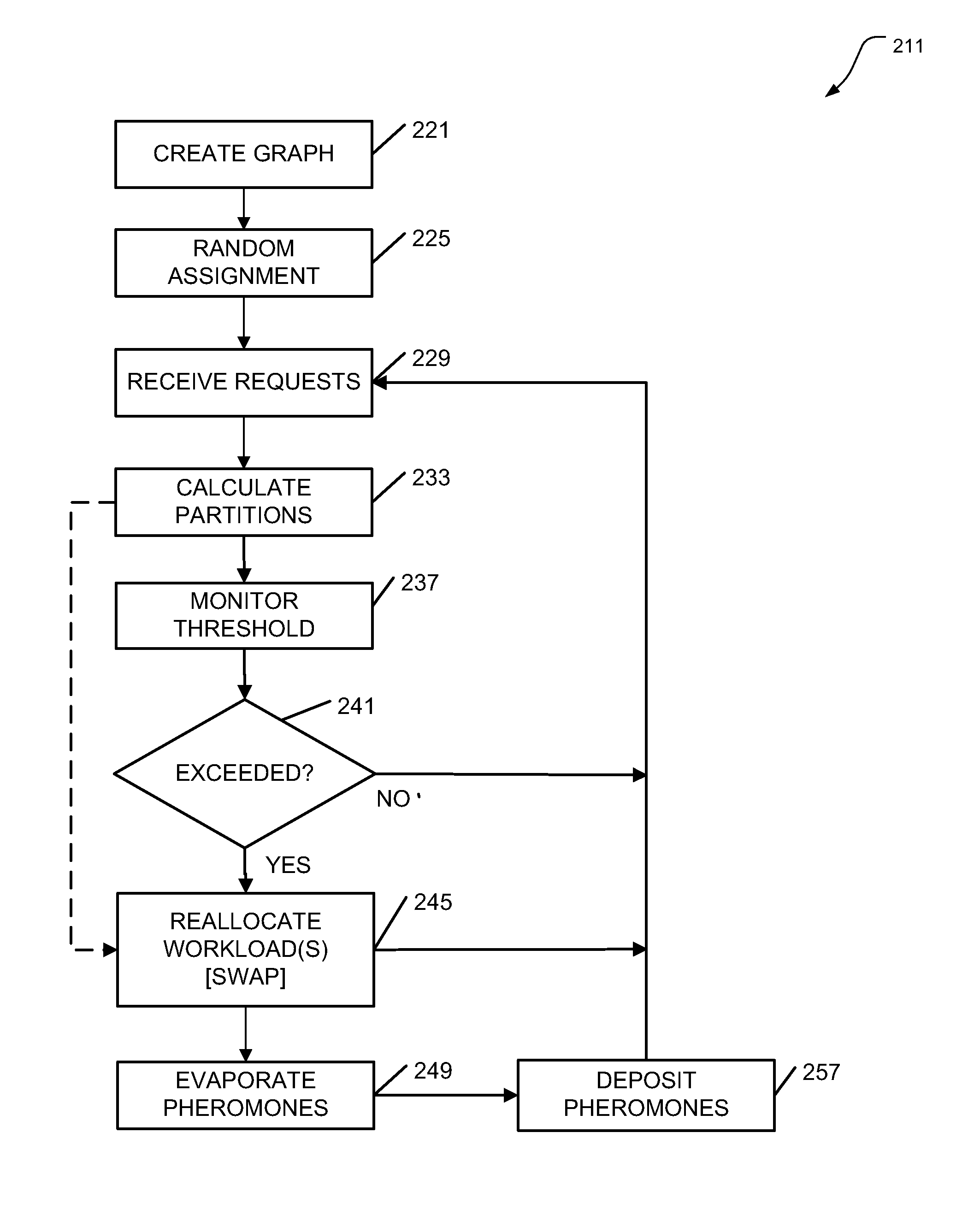Autonomous intelligent workload management
a workload management and workload technology, applied in the field of autonomous intelligent workload management, can solve the problems of poor implementation of workload adjustments based on real-time workload variations, more difficult efficient assignment of workloads to resources, and the same way of heuristic algorithm suffers
- Summary
- Abstract
- Description
- Claims
- Application Information
AI Technical Summary
Benefits of technology
Problems solved by technology
Method used
Image
Examples
Embodiment Construction
[0009]Intelligent workload management enables information technology (IT) organizations to manage computing resources in a policy-driven, secure, and compliant manner across physical, virtual, and cloud environments to deliver business services to end users. Workloads may comprise integrated stacks of applications, middleware, and operating systems.
[0010]An intelligent workload is policy-driven. It understands its own security protocols and processing requirements so that deployment over the public cloud, the private cloud, and / or physical machines can be self-determined. An intelligent workload can also be performance-optimized, to recognize when it is operating at capacity, and to find additional computing resources to meet spikes in demand.
[0011]In various embodiments, autonomous intelligent workload management can be implemented using a graph-based model to represent data processing requests (e.g., from end-users, such as customers) and resources, such as computing power and sto...
PUM
 Login to View More
Login to View More Abstract
Description
Claims
Application Information
 Login to View More
Login to View More - R&D
- Intellectual Property
- Life Sciences
- Materials
- Tech Scout
- Unparalleled Data Quality
- Higher Quality Content
- 60% Fewer Hallucinations
Browse by: Latest US Patents, China's latest patents, Technical Efficacy Thesaurus, Application Domain, Technology Topic, Popular Technical Reports.
© 2025 PatSnap. All rights reserved.Legal|Privacy policy|Modern Slavery Act Transparency Statement|Sitemap|About US| Contact US: help@patsnap.com



